
Find out about Jersey's historic environment, how to carry out further research and how we are protecting the past for the future
The historic environment is the physical evidence of past human activity through time. It is tangible in the form of a Neolithic dolmen, a medieval granite farmstead, an elegant Georgian residence, a watermill, a landscape or an artefact and provides a sense of place and identity, connecting people with historical events, personal stories and memories.
The most important historic places in Jersey are listed.
Jersey Heritage researches buildings, archaeological sites, monuments, parks and more to understand what makes them special and provide expert advice to the government on their protection through listing.
Listings are all encompassing of the Island’s historic and prehistoric landscape. It is not just historic houses and farms that are protected and celebrated but an array of important structures and places that contribute to the story of Jersey.
On the highest point of the headland at La Coupe Point in St Martin is the rare survival of an early 19th century watchtower. Used by the Royal Navy as a lookout post during the Napoleonic wars, this tiny circular stone building only allowed standing room for one person. Once part of a continuous military chain of towers, lookouts, guardhouses, batteries, forts and signal stations around the coast, the watchtower was listed in 2017.
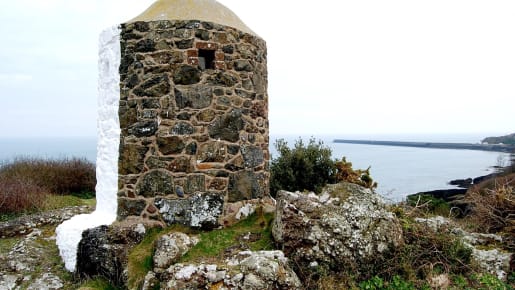
Perhaps most emblematic of the island’s historic quarrying industry is the stone crushing house that stands sentinel over La Moye headland. The crushing house was part of a complex of Victorian quarry buildings that once supplied high-class pink granite for building and ornamentation, including for the construction of the Victoria Embankment in London and for the plinth of the Queen Victoria statue that stands in St Helier. The crusher house was listed in 2015.
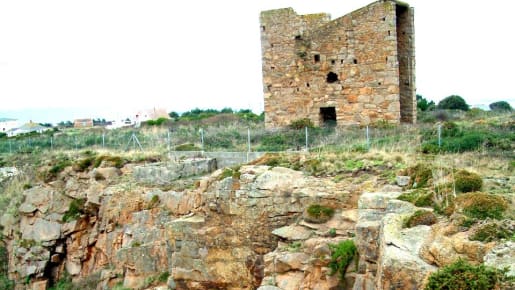
A lot of our history is hidden from view to the naked eye. Ancient structures such as remnants of buildings and defensive ramparts can be almost impossible to spot, as time and nature has covered them with soil and vegetation. But examine Jersey’s landscape using LiDAR and the past is revealed.
LiDAR is one of archaeology’s most exciting modern tools. This remote sensing technology uses a laser mounted on a light aircraft to record hundreds of thousands of points on the ground enabling computers to create 3D maps of the land surface. The maps can even strip away surface features to show a ‘bare-earth’ landform – excitingly revealing images beneath woodland and vegetation.
The LiDAR survey undertaken by Jersey Heritage in 2020 has revealed much about the ways our ancestors used the landscape: signs of medieval agricultural practices, previously unknown 18th century defences, even potentially a ‘new’ dolmen.
The results of the LiDAR project are available for everyone to explore through the Historic Environment Record – with some online and the range of digital elevation models at Jersey Archive.
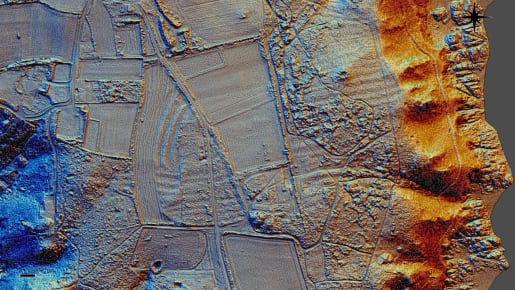
The historic environment team record archaeological objects found by members of the public to help advance knowledge of the history and archaeology of Jersey.
This bronze coin was found in a field in St Ouen but was minted nearly two thousand years ago and two thousand miles away in Egypt. The image shows a portrait of the Roman Emperor Hadrian wearing a crown of laurel leaves, with a bull on the reverse. It was reported to the FLO by a metal detectorist in 2022.
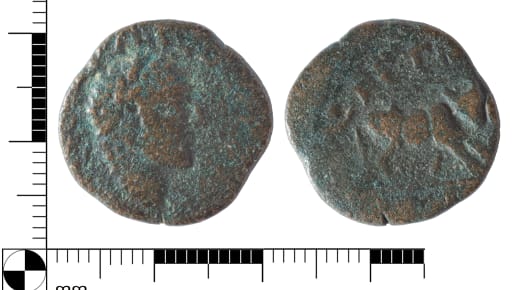
Recovered from a field in Grouville, this object has been identified as an Early Medieval Irish house-shrine mount, and may have been part of loot from a Viking raid. The bronze plate is decorated with two stylised, mirrored ‘birds’, their eyes formed of concentric circles of yellow enamel. It was reported to the FLO by a metal detectorist in 2021.
What to do if you find something
Please report your find to the Finds Liaison Officer at Jersey Archive who will identify and record important objects and add them to the archaeology content of the HER.
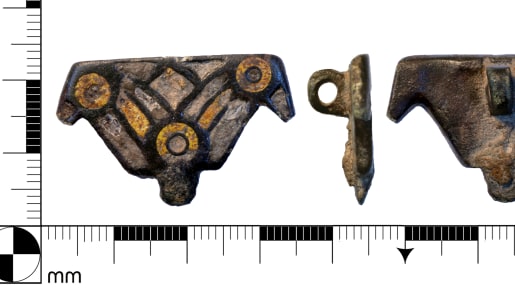
- Archirondel Tower
- Barge Aground
- Civil Emergency Centre
- Elizabeth Castle
- Fort Leicester
- Grosnez Castle
- Hamptonne
- Icho Tower
- Kempt Tower
- La Cotte de St Brelade
- La Crête
- Le Hocq
- La Hougue Bie
- La Rocco Tower
- La Tour Cârrée
- L'Etacquerel Fort
- Mont Orgueil Castle
- MP2 Tower
- Number 9 Pier Road
- Portelet Tower
- Seymour Tower









